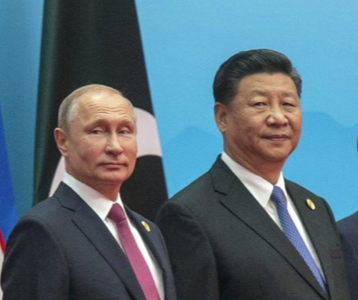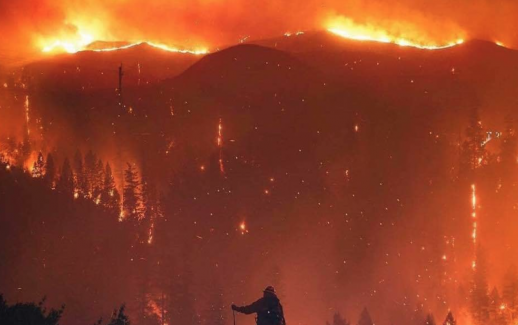As an Economist headline editor put it recently, “Turkey sits at the crossroads of tectonic plates as well as civilisations.” And when the 7.8 magnitude earthquake centered near Gaziantep, Turkey caused a confirmed death toll of 50,783 souls, it highlighted the risk of autocratic license, boasting, and related corner-cutting to the rule of President Recep Tayyip Erdogan. This left many to wonder what President Erdogan had learned from Turkey’s well-documented history of powerful earthquakes by 2023.
The December 26, 1939 Erzincan quake was estimated at 7.8 magnitude, just like the Gaziantep quake of 2023. It caused 32,700 deaths striking 3 minutes shy of midnight. The 1939 quake killed roughly 18,000 fewer Turks than the February 2023 quake. Turkey also suffered two big quakes at magnitude 7.5 in both 1943 and 1976. And these are only the quakes within the past 84 years. Turkey’s history of major quakes extends centuries into the past.
Despite Turkey’s complex tectonics and seismic history, Erdogan in 2019 took credit for “building amnesties” as a political campaign plug for cheap housing. After the February 2023 earthquake, Mr. Erdogan tried to defend himself for his praise of building amnesties with the claim that 98 percent of the buildings destroyed in the February 2023 earthquake were built before 1999, i.e. before his rule. Yet Mr. Erdogan’s claim was refuted by Turkish engineering experts and satellite evidence.
Perhaps worse, a February 26, 2019 Reuters report quoted Turkish engineers and builders warning that building amnesties could be lethal, with Cemal Gokce, the chairman of the Chamber of Civil Engineers saying they could turn Turkish cities into “graveyards.”
And in 2011 when Mr. Erdogan was Prime Minister he accused municipalities, constructors and supervisors of murder for the death toll of 460 after a 7.2 magnitude earthquake in Eastern Turkey, according to the Independent:
Prime Minister Recep Tayyip Erdogan said Turkey had not learned enough from past earthquakes. The 7.2 tremor on Sunday killed at least 460 people.
“When we look at the wreckage, we see how the material used is of bad quality,” Mr Erdogan said. “We see that people pay the price for concrete that virtually turned to sand, or for weakened concrete blocks on the ground floors. Municipalities, constructors and supervisors should now see that their negligence amounts to murder.”
He said: “Despite all previous disasters, we see that the appeals were not heeded.”
And yet Mr. Erdogan politically adopted the building amnesties he decried as corruption eight years earlier.
The U.S. suffered an Earthquake of similar magnitude to Turkey’s February 6, 2023 earthquake in San Francisco’s 1906 earthquake and fire, causing 3,000 deaths and $524 million in then-property damage (inclusive of fire damage). Yet that was 1906, with some 47,000 fewer deaths than that suffered in Erdogan’s Turkey in 2023.
The 1906 Frisco quake hit at 5:12 AM hour whereas Turkey 2023 quake hit at 4:17 AM, an hour and five minutes apart adjusted for time zones.
After the 1906 quake, San Francisco was in a hurry to rebuild, leaving building codes unchanged. However, within 20 years, the strong Long Beach earthquake in 1933 would damage schoolhouses in California, leading to the Field and Riley Acts addressing unreinforced brick and concrete buildings. By this 2006 San Francisco Chronicle report, San Francisco had reinforced some 90 percent of its legacy buildings. The Chronicle has kept up the coverage of the issue since, and democracy rightly holds elected city officials to account.
The comparison is not to throw stones, but to suggest that vertical federalism, constitutional government, democratic elections, and free presses present more competitive politics in which meritorious action stays relevant while autocrat PR and personality cult does not make the cut. Politically weakened, Mr. Erdogan is now contending with democratic elements reasserting themselves to hold him accountable at the polls in the coming runoff election for Turkey’s presidency.
Finally, as Russia’s ‘unlimited’ partner China has used backroom diplomacy to bring Saudi Arabia and Iran together to aggrandize influence over the Middle East, this has put Turkey’s security and economic interests at risk. Turkey’s autonomy and power at the crossroads of Asia, the Mideast, and Europe is also at risk to Beijing’s powerful momentum and its Mideast neighbors’ ambitions.
As China has clearly found the democratic West’s innovation and efficiencies worthy of imitation, acquisition, and theft, Turks may wish to consider how constitutional merit has greater gravity for getting results in innovation and governance compared with autocratic theft and dependence on bigger autocracies.
The American response to the two major 1906 and 1933 California earthquakes in which the death toll was a fraction of that of Turkey’s 2023 Gaziantep quake is illustrative of freedom’s merit. The Western track record for maintaining a well-developed rule of law, free elections, federalism, and growth in civil rights that enhance competition and merit offers a better future for diplomatic, economic, and security alliances than autocracies can.
China, like Russia in its over-concentration of power is already taking autocratic, authoritarian license infiltrating every region of the world and its oceans with its imperial, appetitive, and rigid presence.

